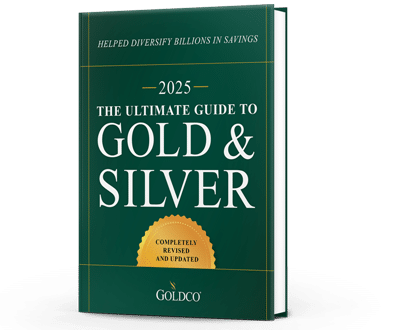Starting a Gold IRA: What You Need to Know
People choose to start a gold IRA for a number of different reasons Some are looking to help safeguard themselves against stock market instability Others are trying to help safeguard their wealth...
Retirement

Everyone has dreams of retiring some day. For many people, that’s the motivation that keeps them coming into work every day, the knowledge that every day they’re building up more and more money in their nest egg to enable themselves to finally quit the rat race in the future. But for many potential retirees, the timing of their retirement can make a huge difference in how much money they have available to them.
The 1980s and 1990s saw one of the most incredible stock market booms in history, with markets averaging close to 15% annual gains throughout that entire period. That made a lot of baby boomers rich, at least on paper. Then came the dotcom bubble crash and, after a short recovery, the housing bubble crash.
The Dow’s 2000 highs weren’t matched again until late 2006, and after the financial crisis that level wasn’t reached again until 2011. So many of the people who retired between 2000 and 2011 risked having less money in their 401(k)s, IRAs, and other retirement accounts than they did before the dotcom bubble burst.
Now that we’re on the cusp of yet another stock market crash, workers planning to retire within the next 5-10 years are facing a similar risk. With high-flying stock markets fueled largely by debt-backed stock buybacks, the prospects for a stock market crash are increasing every month. When stocks finally return to more normal valuations, many investors will find themselves in a position similar to that of those investors trying to make sense of the 2000-2011 stock markets.
For those looking to retire within the next few years, they risk retiring into a bear market. If they don’t take the right steps to protect their assets before a market crash, they risk losing 50% or more of their retirement savings just when they need it most. So what can they do to keep that from happening?
While the future can’t be predicted, trends in markets can be foreseen. And since business cycles occur with regularity, investors need to be attuned to what is going on in markets. Even if their investment strategy is simple buy and hold, adjusting portfolio holdings based on market conditions can help investors maintain their wealth.
For instance, when stock markets are rising many investors purchase stocks. But when markets peak or plateau, switching to government bonds or money market funds can be a better choice. Then when stocks fall, investors can switch their bond investments back to stocks to take advantage of the upswing.
Investors will never be able to perfectly time markets, that’s a skill that no one has, and anyone who has been able to time markets has only been able to do it in the short term, never over the long term. But getting out of stocks before they peak and getting back in after they bottom out can help greatly in maintaining your wealth.
Since stock markets today are largely driven by central bank action or the prospect of more central bank monetary easing, paying attention to what central banks are doing is key. That means not just listening to speeches and reading commentary on what the Fed might do, but also looking at data on the monetary base, the money supply, the Fed’s balance sheet, etc. Identify trends, see whether the Fed’s talk is matching its actions, and you can stay ahead of the curve.
Look also at a broad array of economic indicators. Sure, the unemployment rate may be low, but that doesn’t mean the economy is strong. Look at other indicators of economic activity that are flashing warning signs and you’ll realize that trouble is on the horizon. Getting your assets to safety now will put you far ahead of most other investors. Yes, you may be tempted to hold on to get every single penny you can in stock market gains, but if you hold on too long you may end up losing money.
Protect your assets by identifying investment assets that you can get into for the short term, medium term, and long term. If your retirement savings are largely in 401(k), IRA, or similar tax-advantaged accounts, determine what options you have within your current funds for rearranging assets. If your retirement plan allows you to move from stock funds into money market funds with minimal or no fees, that could be a good short-term option until you decide where you want to move your money permanently.
In the medium term you may wish to move your money into short-term government bonds, at least to bring in a little bit of interest income, until you see how much interest rate cutting the Fed will engage in over the longer term. And for the long term you may want to start putting your savings into gold, foreseeing a bull run in gold prices when stock markets begin their downturn.
A properly diversified portfolio can help minimize losses, as it’s not possible to eliminate all losses. But diversification means more than just a mixture of stocks, bonds, CDs, etc. It means diversifying across regions, industries, and asset classes. And for more and more investors, it means adding precious metals to their portfolios.
Gold in particular has been highly valued by investors for its ability to protect investor wealth when the economy turns south. Its performance during and after the 2008 financial crisis helped many investors protect their retirement assets during a time of remarkable financial turbulence. With all indicators pointing to a similar crash in the near future, gold can help investors today protect their assets from near certain losses.
When the time comes for retirement, you certainly hope that you’ll be in control of the timeline. But many people may find themselves retiring before they had hoped or planned to. While your retirement timeline may be out of your control, your retirement assets are not. Make sure that you make the right investment decisions to ensure that your retirement portfolio is there and working for you when you need it most.

